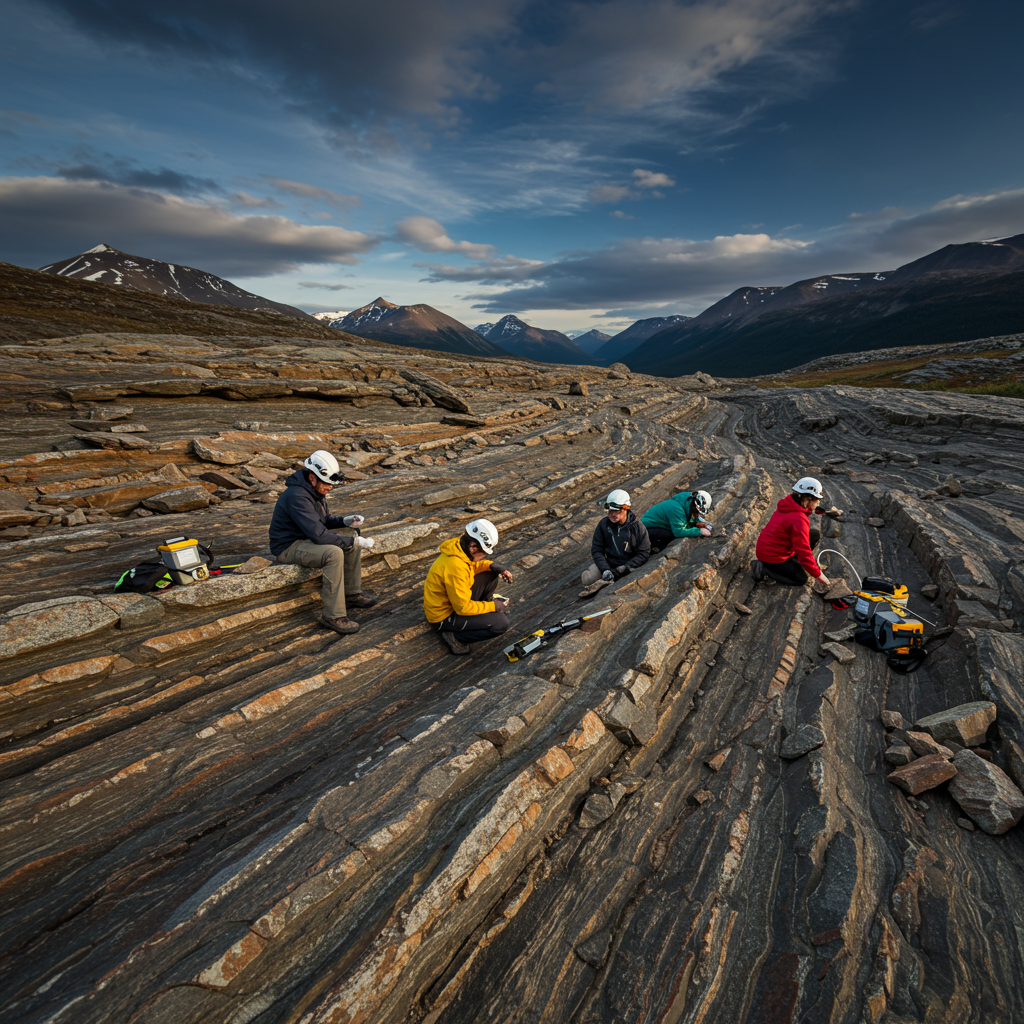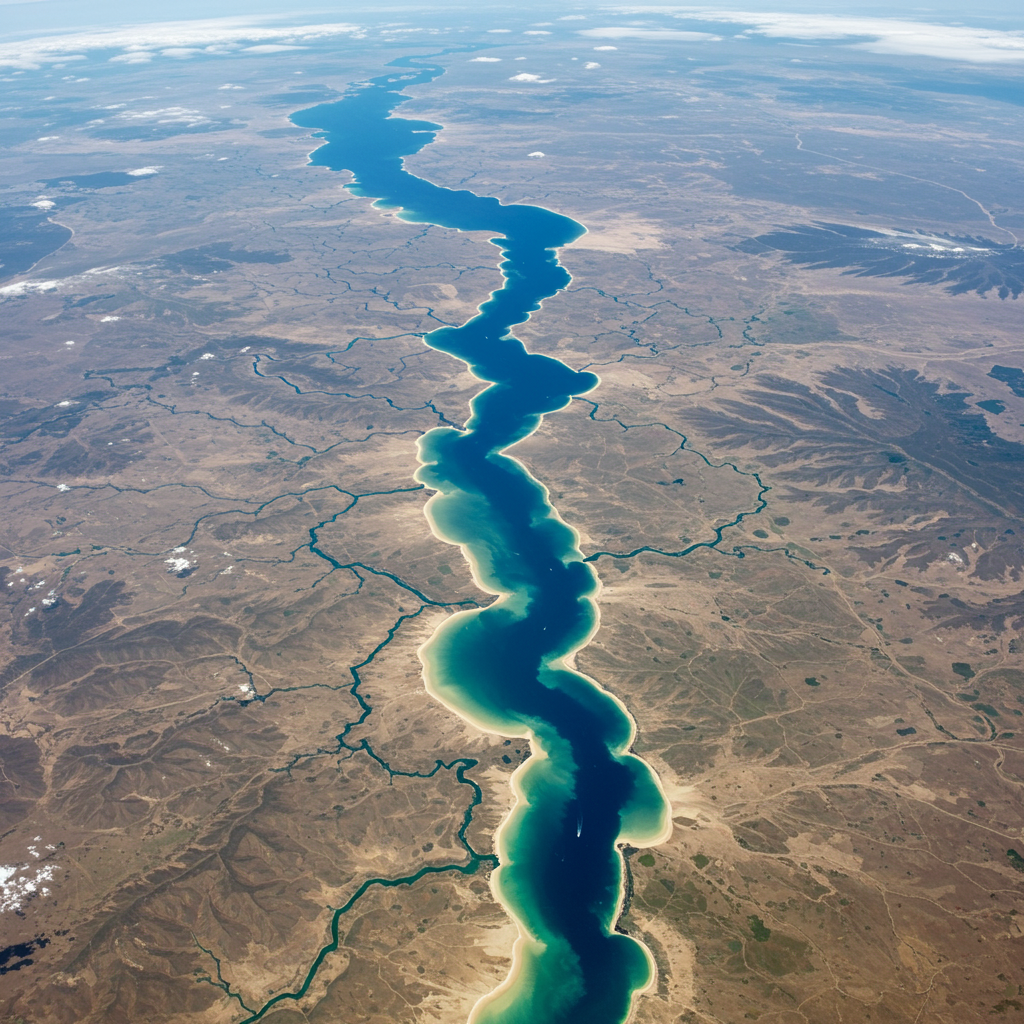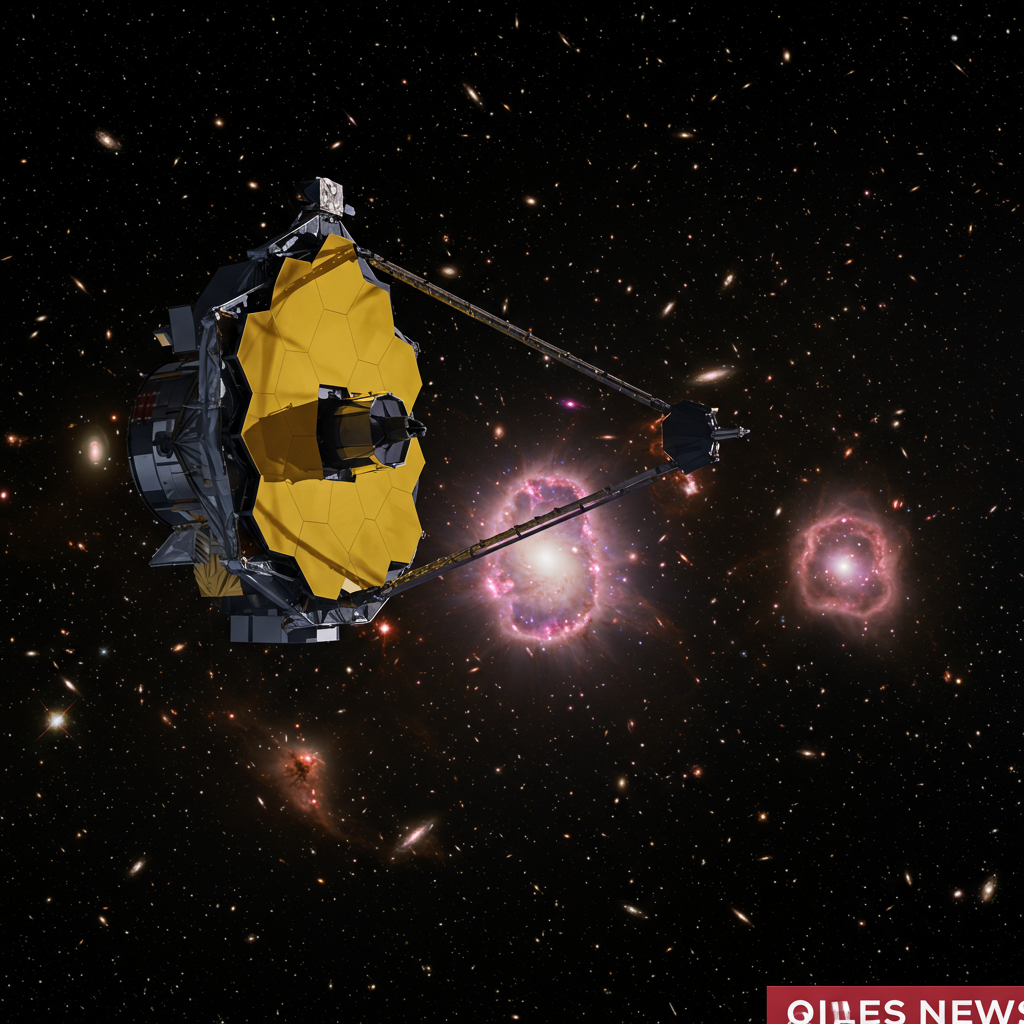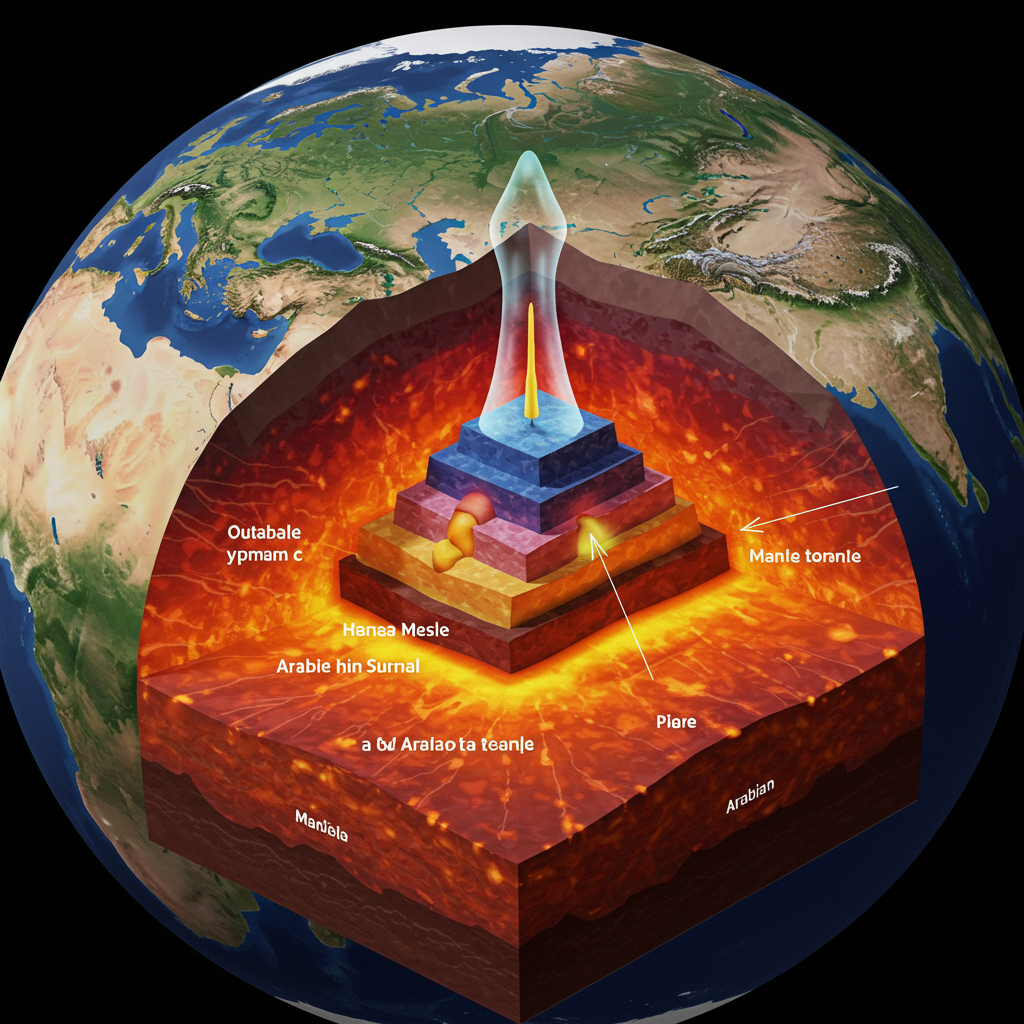A recent study reignites the debate about the true age of Earth’s most ancient surface materials. Research focusing on a remote rock formation in northern Quebec, Canada, suggests it holds rocks that formed over 4.16 billion years ago. If confirmed, these formations could provide an unparalleled glimpse into our planet’s earliest history, a chaotic and little-understood period known as the Hadean eon. Scientists believe these rocks might even contain clues about the environment where life first emerged on Earth, and potentially elsewhere in the cosmos.
Unearthing Time in Canada’s Remote North
The site of this significant geological discovery is the Nuvvuagittuq Greenstone Belt (NGB), located on the eastern shore of Canada’s vast Hudson Bay. This outcrop is already recognized for its extreme age, but the new analysis pushes the estimated formation time back even further, solidifying its status as one of Earth’s most precious geological time capsules.
These distinctive streaky gray rocks, part of the NGB, represent potential remnants of Earth’s primordial crust. Our planet is approximately 4.57 billion years old. The Hadean eon, spanning roughly the first 600 million years, was a tumultuous time. Earth was a fiery, cooling ball of lava, constantly bombarded by asteroids. A colossal impact with a Mars-sized protoplanet named Theia tore off material that coalesced to form our moon. Slowly, pockets of solid rock began to appear as the surface cooled.
Understanding this earliest phase is incredibly challenging because very few rocks from the Hadean eon survive today. Earth’s dynamic nature, driven by processes like plate tectonics, has largely recycled or transformed most ancient crustal materials. The NGB is a rare exception, possibly preserved due to its location within the stable Canadian Shield and potentially through ancient subduction processes.
The Complex Science of Dating Deep Time
Pinpointing the exact age of rocks billions of years old is a complex scientific endeavor. Geologists typically rely on radiometric dating methods. These techniques measure the decay of radioactive isotopes within the rock. Think of it like a ticking clock, where unstable elements transform into more stable ones at a predictable rate.
The most common and reliable method for dating ancient rocks involves the decay of uranium into lead using zircon crystals. Zircon is a mineral that incorporates uranium when it forms but excludes lead. This makes it an excellent timekeeper. However, the volcanic rocks in the NGB lack zircon, forcing scientists to use alternative methods.
The researchers, led by Jonathan O’Neil, a professor at the University of Ottawa, utilized the samarium-neodymium dating method. This technique measures the decay of two samarium isotopes (samarium-146 and samarium-147) into corresponding neodymium isotopes (neodymium-142 and neodymium-143). While suitable for rocks older than 4 billion years, this method has historically presented challenges with Earth rocks, partly because the two decay pathways have vastly different half-lives. The longer-lived pathway is more susceptible to being “reset” by later geological events like intense heat or pressure (metamorphism), which can alter the isotopic ratios and muddy age estimates.
Addressing Past Controversies
O’Neil’s team first proposed a very old age for the NGB (around 4.3 billion years) in a controversial study published in 2008. Other geologists questioned the findings, partly due to the discrepancies sometimes seen between the two samarium-neodymium clocks and the possibility that the rocks were a mixture of older and younger materials.
To provide more robust evidence, the team undertook a new analysis. They focused on specific sections within the NGB where younger magma from Earth’s mantle had intruded into the older crust. By definition, these intrusive rocks must be younger than the rocks they cut through. The breakthrough came when they analyzed samples from these intrusions: both samarium-neodymium decay pathways yielded the same age – 4.16 billion years.
This consistency across both isotopic clocks within these specific, well-defined intrusive sections significantly strengthens the argument for a Hadean age for the NGB. Since the intrusive rocks are dated to 4.16 billion years, the surrounding host rocks must be even older. While the new study confirms a minimum age of 4.16 billion years, O’Neil suggests the best estimate for the volcanic rocks themselves remains closer to the 4.3 billion years proposed earlier. “No known rocks are older,” O’Neil stated, highlighting the potential significance of this finding.
A Window into Earth’s Earliest Environment
If the ancient age of the NGB rocks is broadly accepted by the scientific community, they offer a rare and precious window into Earth’s Hadean eon. This period is often referred to as a “dark age” in geological history due to the lack of preserved rock records.
These rocks can potentially reveal crucial information about the conditions on early Earth. Some NGB rocks are believed to have formed from precipitation out of seawater. Analyzing their chemical composition can help scientists reconstruct the characteristics of the earliest oceans, including their temperature and overall chemistry. They might also provide clues about the composition of the Hadean atmosphere.
Crucially, the NGB rocks could shed light on the very origins of life. Scientists speculate that life might have first emerged in environments like hydrothermal vents on the ancient seafloor, a setting possibly linked to the formation of some NGB rocks. Studying the chemical signatures within these rocks could potentially reveal the oldest traces of microbial life on Earth. Identifying isotopic anomalies or microstructures consistent with early biological processes would have profound implications, suggesting life could arise relatively quickly under the right conditions.
NGB: Unique Compared to Other Ancient Finds
While other ancient Earth materials exist, the NGB holds unique importance. The Acasta Gneiss in Canada’s Northwest Territories is currently accepted as the oldest preserved section of continental crust, dated to approximately 4.03 billion years old. Even older isolated mineral grains, like zircons from the Jack Hills in Western Australia, have been dated up to 4.4 billion years. However, these zircons are individual crystals found embedded in much younger rocks.
The NGB is significant because it represents a relatively unified belt of crustal material. This allows geologists to study a geological system, not just isolated grains. Studying the relationships between different rock types within the NGB provides a more comprehensive picture of the environmental conditions and geological processes occurring during the Hadean eon. It allows scientists to potentially reconstruct an entire ancient environment.
The Survival of Ancient Rocks
The preservation of the NGB for billions of years is remarkable. Much of Earth’s ancient crust has been destroyed or transformed by plate tectonics. This process, which involves the movement and collision of massive lithospheric plates, began as early as 3.8 billion years ago. Subduction, where one plate dives beneath another, recycles crustal material deep into the Earth’s mantle. Intense heat and pressure during mountain building and other tectonic events also alter rocks beyond recognition.
The NGB’s survival is partly attributed to its location within the exceptionally stable Canadian Shield, a vast area of ancient crystalline rock that has remained largely undisturbed by tectonic forces for eons. Additionally, some theories suggest that portions of the NGB might have been protected by being caught in a subduction zone and buried relatively quickly, shielding them from subsequent surface erosion and alteration.
Looking Ahead: Unlocking More Secrets
Research on the Nuvvuagittuq Greenstone Belt is far from over. Scientists continue to employ advanced analytical techniques to study these precious rocks. Methods like atom-probe tomography and high-resolution isotopic analysis allow researchers to examine trace elements and isotopic compositions at an incredibly fine scale.
These studies aim to uncover more detailed information about the rocks’ formation conditions, the characteristics of the early Earth’s atmosphere and oceans, and further potential clues about primitive biochemical processes. Confirming the age of the NGB is seen as crucial for accurately interpreting all these potential findings within the correct geological context of the Hadean eon.
Understanding the conditions where life could have originated on our planet is also directly relevant to the search for life beyond Earth. By studying the chemistry and potential biosignatures within the NGB rocks, scientists gain valuable insights into what kinds of geological and chemical environments might be conducive to life on other planets, such as Mars or distant exoplanets. The NGB is not just a record of Earth’s past; it’s a guide for exploring the possibility of life elsewhere in the universe.
Frequently Asked Questions
What makes the rocks in Canada’s Nuvvuagittuq Greenstone Belt potentially the oldest on Earth?
Scientists propose the Nuvvuagittuq Greenstone Belt (NGB) in Quebec contains some of Earth’s oldest rocks based on radiometric dating, primarily using the samarium-neodymium method. A recent study confirmed a minimum age of 4.16 billion years for younger intrusive rocks within the belt. This age places the host rocks firmly in the Hadean eon and implies they are even older, potentially up to 4.3 billion years, predating most other known preserved crustal formations globally.
How do scientists use radioactive dating to estimate the age of ancient rocks like the NGB formations?
Scientists use radiometric dating by measuring the decay of unstable radioactive isotopes within a rock into stable daughter isotopes over time. This process occurs at a known rate (half-life). By analyzing the ratio of parent isotopes to daughter isotopes, scientists can calculate how much time has passed since the rock solidified. For NGB rocks, lacking zircon, they used the decay of samarium into neodymium, applying multiple isotopic “clocks” to verify consistency, particularly in samples less affected by later geological changes.
Why are these ancient NGB rocks important for understanding Earth’s early history and the origin of life?
The Nuvvuagittuq Greenstone Belt rocks formed during the Hadean eon, a period with almost no surviving geological record. Studying their chemical composition can reveal insights into the conditions of early Earth, such as the nature of the first oceans and atmosphere. Some rocks may have formed in environments like hydrothermal vents, potential sites for the origin of life. Finding chemical or isotopic traces of early microbial activity in these rocks could push back the timeline for life’s emergence and inform the search for life on other planets.
Word Count Check: 1256 words




